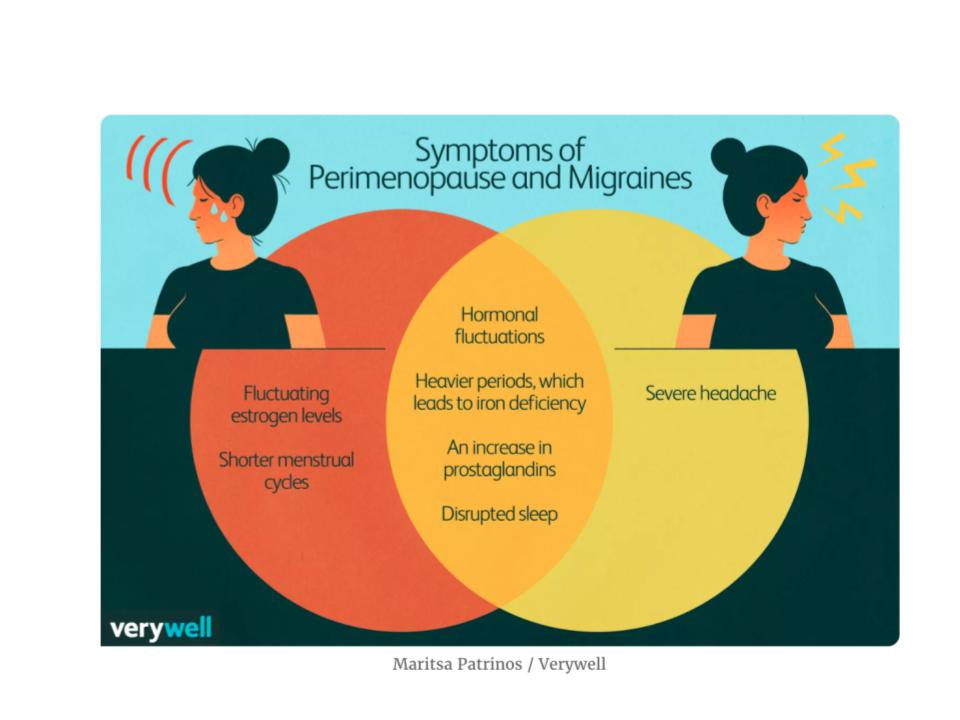
Although most women with migraine develop the disorder in their teens or twenties, 8 to 13 percent report the new onset of migraine during perimenopause. This is thought to be caused by peri-menopausal hormonal fluctuations. It may also be due to other causes that are frequently co-morbid with migraine: anxiety, depression, and sleep disturbances for which midlife women are at increased risk. The majority of standard migraine treatments are indicated regardless of menopausal stage, but symptoms, co-morbid disorders, existing medications, and patient preferences can all impact the choice of treatment. In addition to the mainstays of acute and preventive medications (NSAIDs, triptans, anti-epileptics, beta-blockers, and tricyclic antidepressants), the new drug class of monoclonal CGRP antibodies provides a promising and well-tolerated option for midlife women. An integrated approach can include mental health therapy, massage, relaxation techniques, and/or biofeedback training. MCHN also offers injections and IV therapy for pain, dehydration, nausea, vomiting, and dizziness. For more information, please call The Manhattan Center for Headache & Neurology to discuss with one of our caring providers.
—Alice N.S. Wong, NP
Reference:
Pavlović JM. The impact of midlife on migraine in women: summary of current views. Womens Midlife Health. 2020;6:11. Published 2020 Oct 6. doi:10.1186/s40695-020-00059-8
